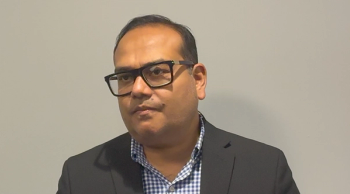
Most Early Breast Cancer Patients Avoid Full Lymph Node Removal
A major change in the clinical management of breast cancer, most early-stage patients now have sentinel node dissection as opposed to full lymph node removal.
Most women with early-stage breast cancer now have sentinel node biopsy (SNB) as opposed to axillary lymph node dissection (ALND), consistent with recommendations based on clinical trials, according to results of a study
Surgical dissection of fewer lymph nodes lowers the risk of developing side effects such as lymphedema, which occurs in 15% to 20% of patients.
Katharine Yao, MD, director of the Breast Surgical Program at the University of Chicago Pritzker School of Medicine, and colleagues analyzed data from more than 2 million breast cancer patients in the United States to understand trends in the use of SNB and ALND for early-stage breast cancer. Until now, the impact of the American College of Surgeons Oncology Group Z0011 trial has been unclear.
The
“The Z0011 study showed that not all breast cancer patients who had tumor in their sentinel node need a completion axillary dissection,” Yao told Cancer Network. “The most beneficial aspect … is that many patients can now avoid a full axillary dissection and all of its comorbidities, such as lymphedema, range of motion problems, and nerve and vessel injuries.”
Using the National Cancer Data Base (NCBD), Yao and colleagues identified 74,309 breast cancer patients who fit the criteria of the Z0011 study, classifying SNB as removal of fewer than 4 nodes (23.7% of patients) and ALND as removal of more than 10 nodes (55.3% of patients).
“The Z0011 trial was published in JAMA in the early part of 2011, and our study showed rapid uptake of the trial results in 2011, shortly after it was published,” said Yao.
The proportion of lumpectomy patients receiving SNB increased from 6.1% in 1998, to 23% in 2009, to 56% in 2011 (P < .001).
The researchers found that factors that led to the use of ALND over SNB included age of younger than 50 years, African American descent, triple-negative breast cancer, tumor size greater than 3 cm, two or more positive nodes, invasive lobular carcinoma, grade III disease, and lymph node macrometastases.
According to Yao, this suggests that some clinicians may not opt for SNB for high-risk patients even though high-risk patients were included within the Z0011 trial.
Yao and colleagues assessed an additional 400,052 breast cancer patients that did not fall within the Z0011 trial eligibility criteria.
“Our findings also showed that surgeons are performing [SNB] alone in subgroups of patients that fall outside the Z0011 criteria despite the fact that these patients were not included in the trial,” Yao noted.
They found that SNB was performed in 22.3% of patients who had a mastectomy, in 54% of patients who had tumors larger than 5 cm, and in 52.5% of patients who received partial or no radiation therapy.
“We were very heartened to see the tremendous impact of the Z0011 trial on surgical practice given how hard it can be to conduct clinical trials,” said Yao. “This trial is a great example of how clinical trial findings can really impact clinical practice in a positive way. Most importantly, this trial means that many women will be spared a complete axillary node dissection and spared the risk of lymphedema and other side effects of complete axillary dissection.”
Newsletter
Stay up to date on recent advances in the multidisciplinary approach to cancer.





















































































